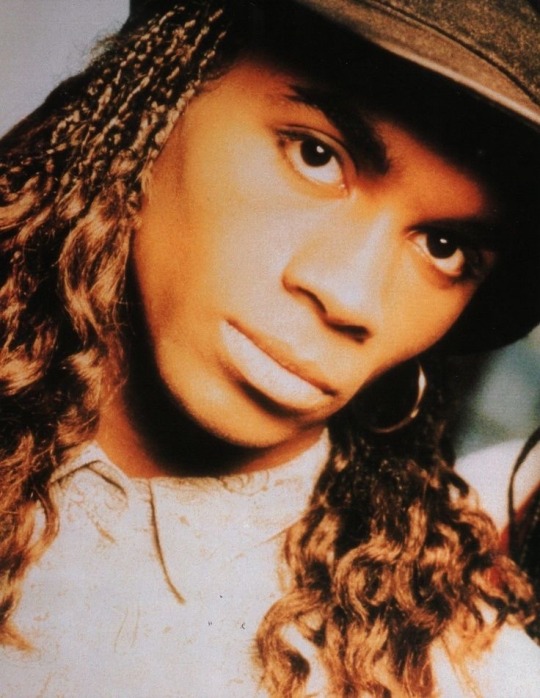#fabrice morvan
Explore tagged Tumblr posts
Text
MILLI VANILLI:
Dancers turned pop stars
Make it big based on a lie
Sleazy producer
youtube
#milli vanilli#random richards#poem#haiku#poetry#haiku poem#poets on tumblr#haiku poetry#haiku form#poetic#documentary#paramount+#downtown Julie brown#diane warren#rob pilatus#sabrina salerno#fabrice morvan#clive davis#boney m#Luke korem#Frank farian#Youtube
4 notes
·
View notes
Text
The Rise and Fall of Milli Vanilli and Life After Scandal

The narrative of Milli Vanilli is a rollercoaster journey filled with swift success, abrupt disgrace, and an endeavor toward personal and professional redemption.
Born out of the vision of music producer Frank Farian in the late 1980s, Milli Vanilli, comprising Rob Pilatus and Fabrice Morvan, became an emblem of commercial and overnight pop success.
Their first album “All or Nothing” (1988) achieved success in Europe leading them to release an updated version titled “Girl You Know Its True” in the United States. The album became a sensation. Propelled them to stardom resulting in three American Music Awards and a Grammy Award for Best New Artist in 1990.
Their dynamic stage presence and unique fashion sense made them true icons of their time. However, their image started to crumble when it was revealed that they hadn’t actually sung any of the songs on their album.
youtube
The video above showcases when their “live” performance was cut short when the audio malfunctioned by skipping during the concert. The duo rushed off stage. When this was headline news I thought to myself that many performances lip sync especially when a lot of dancing was involved. They were very active on stage with a lot of dancing. No big deal, right?
Wrong. The vocals were instead provided by actual singers Ray Horton, John Davis, Gina Mohammed, Frank Farian, and Brad Howell while Pilatus and Morvan acted as figureheads, for the group lip-syncing during performances.
The music industry and the public felt deceived, leading to a historic return of their Grammy Award. This was the first time in Recording Academy history to have any Grammy Award returned, for any reason. The scandal spurred a reevaluation of ethical practices within the industry, spotlighting the fine line between commercial success and artistic authenticity.
The question of who knew about Milli Vanilli’s deception remains a mystery. It’s possible that some people within the industry were aware of the facade. The desire for success might have outweighed ethical considerations. The scandal also ushered in a period of public ridicule and professional ostracism for Pilatus and Morvan.
Pilatus‘ post-scandal life stood in contrast to the admiration he once enjoyed as a pop icon grappling with the disgrace, he spiraled into a life of substance abuse and legal issues, culminating in his tragic demise in 1998.
On the other hand, Fabrice Morvan demonstrated resilience as he tried to rebuild his life and career outside the haunting shadow of Milli Vanilli. Nonetheless, reminders of the past continued to cast their shadow over his endeavors.
The dazzling ascent and subsequent plummet of Milli Vanilli from the zenith of the music industry is a tale rich in irony and caution. However, amidst the debris of shattered dreams and stained reputations emerged a narrative of resilience and undying hope, epitomized by Fab Morvan’s journey post-scandal. While the world was quick to castigate and relegate the duo to the annals of infamous frauds, Fab Morvan embarked on a path less trodden, one that sought redemption through authenticity and a genuine love for music.
His efforts to rejuvenate his music career saw him venture into various collaborations, each endeavor a step towards carving a niche that resonated with his true musical essence. Fab sought to distance himself from the fabricated image that had once catapulted him to stardom, instead opting for a path that prioritized authenticity over commercial success. The road was arduous and laden with skepticism from critics, yet it was a road that Fab Morvan trod with unwavering resolve.
Parallel to his professional endeavors was Fab Morvan’s personal journey. He found love and embraced the joys of fatherhood, a phase of his life that perhaps provided the solace and grounding needed amidst the tumultuous professional landscape. His relationship with Tessa Van Der Steen and the birth of their children marked a new chapter, one that transcended the chaos that had once engulfed his existence.
Moreover, Fab Morvan’s engagement in discussions and reflections about the Milli Vanilli saga, as evidenced in recent documentaries and interviews, indicates a level of acceptance and introspection. He has become a voice of experience, offering a unique perspective on the intricacies and ethical dilemmas inherent in the music industry.
The essence of Fab Morvan’s narrative post-Milli Vanilli is a blend of professional resilience and personal growth. His journey embodies the quintessence of redemption, showcasing that even in the face of adversity, the human spirit’s quest for authenticity and genuine connection remains undeterred.
Through the lens of Fab Morvan’s experiences, the tale of Milli Vanilli transforms from a mere scandalous anecdote to a nuanced narrative rich in lessons about integrity, authenticity, and the indomitable human spirit. His life post-Milli Vanilli is a testament to the enduring essence of hope, resilience, and the inexorable drive to forge a genuine connection with the world, even when the odds are stacked against one.
I grew up in the 80s and was a huge fan of Milli Vanilli. Despite the shock heard around the world, I was in love with this duo and their fake vocals. The album had hits that resonated with my high school experiences and memories. Still to this day, I listen to their music even though they are the visual, I still enjoy the vocals of the original singers. Seeing this new documentary really reawakened my love for the duo.
I feel that Frank Farain did not take much responsibility for creating this fraud and the fact that I feel record producer, Clive Davis, knew about it really hurts. Money makes the world go around and in the end, Rob is the one who lost most, his life.
You can see the new “Milli Vanilli” documentary on Paramount Plus.

#rob pilatus#milli vanilli#fabrice morvan#fab morvan#grammys#1980s music#hollywood scandal#scandals#documentary#documentaries#paramount plus#Youtube
2 notes
·
View notes
Text
youtube
0 notes
Video
youtube
Milli Vanilli - Girl You Know It's True
Because watching the @MilliVanilli documentary showed me how Fab Morvan and #RobPilatus were victimized by Frank Farian and that this 1⃣9⃣8⃣8⃣ song has become a classic. #GirlYouKnowItsTrue
0 notes
Text

november 19
1990
The National Academy of Recording Arts & Sciences strips the 1989 Best New Artist Grammy from Milli Vanilli because Rob Pilatus and Fabrice Morvan didn't actually sing on their debut album, "Girl You Know It's True." It is the first time a Grammy has ever been revoked.
8 notes
·
View notes
Text




robert pilatus & fabrice morvan.
#milli vanilli#rob pilatus#fab morvan#milli vanilli gifs#gifset#my gifs#i love you black men 😩#it’s giving bad bitch duo
20 notes
·
View notes
Text
youtube
"Baby Don't Forget My Number" is a song by German dance-pop group Milli Vanilli. The track was released in December 1988 as the second single from their debut album, All or Nothing (1988), as well as its American counterpart, Girl You Know It's True (1989). It became the first of their three number-one hits on the US Billboard Hot 100 chart in January 1989, earning a gold certification from the Recording Industry Association of America and launched the duo, Rob Pilatus met Fabrice Morvan to massive fame.
Unfortunately, later that same year allegations and events that suggested they were lip-syncing would surface.
Shortly after "Don't Forget My Number" hit #1, they came in for their first interview with MTV. It quickly became apparent their English language skills were lacking, stirring doubts among those present as to whether they had actually sung on their records.
Later in July, MTV launched a Club MTV Tour featuring the pair along with Information Society, Paula Abdul, and Tone Loc. During a live performance on the channel from a theme park in Connecticut, a hard drive issue caused the recording of the song "Girl You Know It's True" to jam and skip. "I knew right then and there, it was the beginning of the end for Milli Vanilli", recalled Pilatus of the incident. "When my voice got stuck in the computer, and it just kept repeating and repeating, I panicked. I didn't know what to do. I just ran off the stage." Downtown Julie Brown ran after him and convinced him to finish the set. "With a bit of pushing and screaming, and a couple of F-words I think as well, I got them back out there", Brown explained on VH1's Behind the Music.
The ruse continued and the duo won the Grammy for Best New Artist, but growing public questions asking if they sang on the records, as well as Morvan's and Pilatus's demand to producer Frank Farian that they be allowed to sing on their next album, he decided to fire them and then announced they did not sing on any of the previously released songs. Confronted by the Los Angeles Times, Pilatus confirmed the deception. "It's true: Milli Vanilli Didn't Sing", read the newspaper's headline. "The last two years of our lives have been a total nightmare.", Pilatus said. " We've had to lie to everybody. We are true singers, but that maniac Farian would never allow us to express ourselves." Pilatus and Morvan gave a press conference for more than 100 journalists in Los Angeles where they stated their willingness to return their Grammy Award. The duo said they had "made a deal with the devil", and they sang and rapped for the room in order to prove that, although they had not sung on their records, they could, in fact, sing.
29 notes
·
View notes
Text
Milli Vanilli
In this blog I’m going to explore how the relation between the industry and artists can be complex through the example of Milli Vanilli.
Milli Vanilli was composed of the French Fabrice Morvan and the German Robert Pilatus. They created a group (Empire Bizarre) in 1987 before the founder of Boney M, Frank Farian discovered them and proposed them to become Milli Vanilli in 1988. They both agreed and signed a contract but they didn’t know at this stage that they would not be singing but lip syncing. In an interview for Konbini, Fab Morvan explains that they signed the contract without a lawyer or a manager to advise them. Then, when they learnt they would be doing lip sync, it was too late because they were already paid and they couldn’t refuse the money because of their financial condition (they were young and not known at this point).
Their first hit “Girl, you know it’s true” was a huge success and propelled them to the rank of superstars and they won a Grammy Award they had to give back later on when Frank Farian revealed in 1990 in an interview that they weren’t the real singers.
This story is so interesting for so many different points but first it shows that an artist can’t just focus on music but needs to keep things in hand because popular music is not just about pure art but it is composed of so many other things to take in account. This case is an example of how bad artists can be treated in the music industry. Second, it shows the audience as active by expressing an opinion because once the secret was revealed, the duo was boycotted and treated as impostors while they tried to impose their ideas to Farian and while they really wanted to sing.
This story ended sadly for Rob Pilatus who died from an overdose in 1998.
youtube
youtube
7 notes
·
View notes
Text

fabrice morvan.
9 notes
·
View notes
Note
ton blog m'a donné envie de me mettre à spirou. Tu aurais des tomes à conseiller pour commencer ?
Wahh je suis trop contente d’entendre ça ! Et oui bien sûr :3 Sous un read more vu que c’est devenu un peu plus long que prévu
Deja tu peux lire tous les tomes de Spirou et Fantasio sur VK
Je recommande évidemment de commencer par la période Franquin vu que c’est celle qui pose les bases de l’univers. Même si le personnage a eu des aventures avant dessinées par Rob Vel puis Jijé, je trouve que c’est plus intéressant de revenir sur ces périodes une fois qu’on a une vue d’ensemble sur la série.
Les tomes essentiels/préférés pour moi sont :
T2 Il y a un sorcier à Champignac
T4 Les héritiers (Zantafio ❤️)
T7 Le dictateur et le champignon (ZANTAFIOOO 😻)
T9 La mauvaise tête
T15 Z comme Zorglub & T16 L’ombre du Z (c’est un diptyque)
T17 Spirou et les Hommes Bulles (surtout parce que la deuxième aventure c’est Spirou et les petits formats et elle est juste trop mignonne 😭❤️)
T18 QRN a Bretzelburg
Bien sûr si l’univers te plaît tu peux lire le reste des albums de Franquin puisque beaucoup de choses y font référence plus tard dans les albums des autres auteurs. Et puis aussi c’est bien :)
Ensuite dans la période Fournier mes préférés sont :
T22 L’abbaye truquée
T23 Tora Torapa
T28 & T29 Kodo le Tyran et Des haricots partout (un autre diptyque)
Fournier a un style un peu plus fantastique que Franquin, ça se voit surtout dans ses décors que je trouve époustouflants surtout dans ces quatre albums. Le diptyque aussi a des moments trop mignons entre S&F arghhh 😭 ❤️
Tu peux passer la période Nic & Cauvin parce qu’elle est sans plus.
Ensuite la période Tome et Janry (T33 - T46) est juste INCROYABLE je conseille de tout lire. Genre vraiment. Tout est excellent 🔥 Mention spéciale à la Vallée des Bannis et Vito la déveine YAOI COCAINE
La période Morvan et Munuera n’est pas incroyable non plus, je conseille de la zapper. Ils essaient de sortir du moule un peu mais entre les scènes d’action insupportables de Munuera et les romances pourries manufacturées par Morvan ça donne juste un résultat bcp trop tryhard et CRINGE
Après la période Yoann & Vehlmann est cool ils font des trucs intéressants avec les persos mais je ne suis pas vraiment fan du graphisme de Yoann. Il n’y a que 5 tomes et ils sont assez courts donc je conseille de les lire aussi 👍
Le tome 56 la mort de Spirou est vraiment excellent par contre, je le recommande vivement.
Après en dehors de la série principale il a le Spirou c’est une série ou différents auteurs peuvent faire du Spirou à leur sauce. Pas obligé d’avoir lu la série principale pour les lire, voire au contraire puisque la plupart des Spirou de s’éloignent de l’univers ‘classique’ de Spirou.
Je recommande TRÈS CHAUDEMENT!!!!! Le Spirou de Schwartz et Yann (Le Groom vert de gris et La femme léopard partie 1 & 2) parce qu’ils sont top et très touchants et franchement. Yann et Schwartz ship clairement Spirou et Fantasio… ils passent leur temps à se faire des câlins et y a pas 3 pages sans une blague/allusion sur leur statut de couple c’est trop mignon aurghh 😭
J’ai beaucoup aimé aussi le Spirou de Fabrice Tarrin La crypte de Champignac et Spirou chez les Soviets. Je trouve qu’il a vraiment une bonne idée des personnages et j’adore son style de dessin.
Il y a le Spirou d’Emile Bravo (Le journal d’un ingénu et L’espoir malgré tout en 4 tomes) qui est aussi excellent, extrêmement bien écrit. Mais S&F sont assez loin du Spirou et du Fantasio dont on a l’habitude.
J’espère que ça t’aidera désolée pour cet énorme pavé 😭 mais une fois que je suis lancée je peux pas me taire ❤️ j’espère que tu aimeras la série !!!
12 notes
·
View notes
Text

—








—
It can be quite the sad sight: the family pet, recovering from surgery, having to wear that awkward cone on their neck to keep them from licking at their stitches.
They look miserable. They look silly.
But Winnie Au is hoping to flip the script with her new photo book, “Cone of Shame.”
In these portraits, dogs are wearing fashionable collars that they can be proud of.
“I wanted to take that post-surgery humiliation — that saddest moment for every pet — and twist it into something beautiful and majestic,” Au says in her book. “I wanted to take the shame out of the cone.”
xxx
Au teamed up with designer Marie-Yan Morvan to come up with the cones in the book.
Their dog models are sporting one-of-a-kind collars made from all sorts of materials — and it’s not just different fabrics or fibers.
These cones also repurpose everyday household items such as drinking straws, makeup sponges, and those foam noodles that float in swimming pools.
xxx
The “Cone of Shame” project was inspired by Au’s late corgi, Tartine, whom the book is dedicated to.
Au and her husband had Tartine for about a year and a half before the dog was diagnosed with throat cancer.
“We went through a long process of going to the hospital, doing chemotherapy, trying to save her, doing all this stuff that was very emotional and difficult,” Au recalled.
It was also expensive. Au and her husband had insurance to help cover the costs, but it made her wonder what it would be like for other pet owners who didn’t have thousands of dollars to take care of their pets.
So, she is dedicating a portion of the proceeds from her book and print sales to Animal Haven’s Recovery Road Fund, which provides specialized medical care and treatment for animals in urgent need.
“I wanted to give back and turn the pain I experienced from having lost my dog into something better,” she said.
xxx
“Cone of Shame,” published by Union Square & Co., is now available.
A launch party will be held September 15 at the Sommwhere studio in New York City, and there will be a silent auction to help benefit Animal Haven’s Recover Road Fund.
#Cone of Shame#Winnie Au#dogs#fashion#photoshoot#fashionable collars#portraits#style#dog breeds#dog portrait#dog collar#surgery#post-surgery#photo book#Marie-Yan Morvan#dog models#pet cones#Elizabethan collars#Animal Haven’s Recovery Road Fund#Tartine#medical treatment#medical care#vet bills#Union Square & Co.#animals in urgent need
1 note
·
View note
Text

- image générée par tumblr -
Jonas - 2024 #16 - Mes premiers post sur Tumblr ont été mis en ligne il y a ... 11 ans - n'hésitez pas à regarder les archives !
-> https://patric-jonas.tumblr.com/archive
----------------------------------------------------------------
depuis février 2013 -> 697 billets (posts) ont été publiés
au fil des mois (et des années) il a été possible de voir/découvrir mes propres productions - 313 billets - ainsi que les très nombreuses contributions des participantes et participants - 384 billets -
entre autres ->
peintures acryliques sur toiles
céramiques - crues - biscuitées - émaillées - vendues
mail-art / art-postal reçus / envoyés - France et International
quelques photos d'expositions - Keith Haring - Simon Hantaï
photos de la promenade des bords du Rhône à Lyon
dessins au feutres "Posca"
trois photos -non publiées ailleurs- de la manif "je suis Charlie"
photos de "mobilier urbain" en céramique vernissée à Céret
photos des pavés chromatiques dans les rues d'Elne
photos de deux expositions collective - Brassy & Clamecy
le projet artistique participatif - 2020 - novembre confiné -
le projet artistique participatif - 2021 - 52 semaines et 12 mois -
le projet artistique participatif - en 2022 fait ce qu'il te plait -
le projet artistique participatif - 2023 - créer trois fois rien -
photos de l'atelier de la chamotte - avec la presse "taille douce"
photos de fabrication de papier recyclés MIM (made in morvan)
de superbes estampes originales sur papier d'art de Fabienne RL
mes propres estampes originales produites à l'atelier
à suivre ...!
un grand merci aux 21 artistes (par ordre d'apparition sur le blog) ->
Guillaume - Cécile - Laurianne - Hélène - Lyla - Fabienne - Lou - Nadine - Youlia - Silanoc - Côme - Antonin - Ysalis - Egon - Marie-Noëlle - Sil - Atte - Tanushree - Lubomyr - Sabrina -
----------------------------------------------------------------
contacts et renseignements : [email protected]
----------------------------------------------------------------
#Jonas#2024#résister#atelier de la chamotte#petits papiers impression & Cie#21 artistes#impression & Cie#petits papiers#11 ans#tumblr milestone#11 year tumblrversary
1 note
·
View note
Text
Mistah Farian, He Dead
I just learned that Frank Farian, notorious music producer responsible for the most popular fake music bands before Dethkløk died in his house in Miami three months ago.
You probably don't know who Frank Farian was, but you know his creations, for example Boney M. Now here's the grand revelation you probably didn't know: Bobby Farrell, the big afro fronting the band, sang something between fuck-all and jack shit on their greatest hits. "There was a certain man in Russia long ago"? That's Frank Farian's own voice right there. "She's crazy like a fool"? Also Farian. Throughout most of their career, Boney M were lip-syncing on the largest concert stages of the world and not even once anything went wrong. Which can't be said of Farian's later creation, Milli Vanilli.
Milli Vanilli was Farian's titanic fuckup. The fact that the two himbos pretending to sing got pissed off because of Farian's bullshit didn't help either, and when the playback recording started skipping during one of the performances, the entire thing went to shit. Insult to injury? The himbos, Rob Pilatus and Fabrice Morvan, actually could sing, and did so under a different producer, but Farian kept stringing them along while having someone else do what they wanted to do. That's pretty much the long and short of it.
1 note
·
View note
Text
Now, in other music industry news...
(LATimes Long Story) Column: Chuck Philips (1952-2024) singlehandedly made music industry journalism better
By Michael HiltzikBusiness Columnist

Chuck Philips
(Ted Roberts / Los Angeles Times)
Few people outside the music industry may know the name Chuck Philips, but few inside the industry will forget it.
As the leading music industry investigative reporter of his generation and a mainstay of Times entertainment coverage for more than a decade, Chuck aimed to force a celebrity-driven corner of journalism into taking seriously how the pursuit of money by industry bigwigs often left the artists themselves at the side of the road.
He may not have entirely succeeded — the coverage of celebrity lives is still a fundamental feature of music writing — but he set a standard that has seldom been matched. Chuck died last month at 71.
“There are two ways to look at investigative reporting in the world of pop music journalism,” says Robert Hilburn, who as The Times’ pop music critic and pop music editor began publishing Chuck’s freelanced stories in the 1980s. “There’s pre-Chuck Philips and post-Chuck Philips. Before Chuck, the coverage, nationally, was mostly timid and sporadic. Chuck turned it into something relentless and uncompromising.”
That’s a global perspective. Here’s a personal perspective, drawn from my working with Chuck on investigations of the music industry in 1998 that won us the Pulitzer Prize: Chuck was the most tenacious, scrupulous and principled journalist I’ve ever known.
There are two ways to look at investigative reporting in the world of pop music journalism. There’s pre-Chuck Philips and post-Chuck Philips.
— Former Times pop music editor Robert Hilburn
I had an elite Ivy League journalism degree and he held a baccalaureate in journalism from Cal State Long Beach and, before joining The Times, had been running a silk-screening business.
After we were paired on our project I stood in awe of his skill at interviewing reluctant subjects, identifying the crux of a tough story, and pursuing it wherever it led, while his rigorous sense of probity and commitment to fairness earned him the trust and respect even of industry executives who knew they were about to be skewered. I learned more from our partnership than I did with anyone else I’ve worked with over a long career.
Hilburn relates that in the early 1980s, he saw the need for a reporter to supplement the reviews and features that made up the bulk of pop coverage with reporting on the business side of the industry.
“There was no place in the budget to hire a reporter,” Hilburn told me, “so I put out the word that I was looking for a free-lance, but the field was so barren that only one person responded.”
It was Chuck Philips, who had “scant experience as a reporter — just a few stories for local music publications. Yet he had an intelligence and desire in our first meeting that stood out. Unable to hire him, I took money allocated for reviews and features to pay him by the story.”
He started with a couple of stories covering a censorship case in Florida that confronted the rap group 2 Live Crew with possible criminal and obscenity charges involving its debut album. “But Chuck didn’t just stop there, he did more than a dozen follow-up stories as new developments arose,” Hilburn said.
Few stories illustrated the compassion and empathy for recording artists that infused Chuck’s work like his coverage of the Milli Vanilli scandal in 1990. Largely forgotten now, the duo of Rob Pilatus and Fabrice Morvan had burst onto the music scene with a 1988 album titled “Girl You Know It’s True.”
The single by that name soared to No. 1 on the Billboard charts. The dreadlocked break dancers, whom Chuck later described as “a sharp-dressing dance duo on the Munich club and fashion-show circuit,” became a worldwide sensation, winning the award for best new artist at the 1989 Grammys.
The truth was that they hadn’t sung a note on the album or on stage, but lip-synced on stage and on videos to tracks laid down by freelance vocalists. They were outed at a news conference by Frank Farian, their own Germany-based producer, who evidently was trying to undercut their insistence on singing on a forthcoming release by destroying their credibility.
“Rob” and “Fab” were showered with vilification and ridicule in the music press. Not in Chuck’s stories, however. He saw clearly that they were the victims in a scam perpetrated by Farian and abetted by what his reporting indicated was the willful blindness, if not the knowing consent, of their American label, Clive Davis’ Arista Records.
A few days after the story broke, the performers granted their first joint interview to Chuck, who showed how they had been ruthlessly manipulated by industry figures who unaccountably escaped with their fortunes and reputations intact. Underlying the fiasco, he wrote, was “the record industry’s myth-making machine built with a recording technology capable of deceit and operated by men who chose to deceive.”
In 1995, The Times finally hired him for its full-time business staff. For Chuck, covering the music industry was not about quick hits or superficial celebrity-driven stories to be turned around in a day or two, but a determined effort to gain the trust of potential sources and infuse them with a sense of responsibility for the integrity of the business.
“Chuck Philips changed my life,” recalls Terri McIntyre, who was executive director of the Los Angeles chapter of the Grammy organization when Chuck and I began investigating the organization, the National Academy of Recording Arts and Sciences, and its CEO, C. Michael Greene. “We became trusted friends as I shared ‘off-the-record’ the horrors of my experience at NARAS and the names of many other individuals he should seek out” for further information, recalls McIntyre, who recently filed a lawsuit alleging she was raped by Greene. (Greene denies her allegations.)
“Chuck’s dedication played a meaningful and significant role in my transition from victim-to-survivor,” McIntyre says. “He doggedly fought for the truth.”
For Chuck, every story involved a long-term investment. He was unfailingly sincere and rigorously honest in his treatment of colleagues and record industry workers, from secretaries to executives. Chuck was one of the most gracious colleagues I ever encountered. As long as we worked together he never forgot my birthday, leaving me CDs with mixes of new music that are still in my collection.
Chuck often took on issues that would not be taken up by the broader press for months, even years. In 1991, working with the late Laurie Becklund, he broke the story of sexual misconduct at three leading record companies and a prominent Los Angeles law firm, unearthing legal settlements and government complaints by secretaries and other women in their offices, divulging damning details and identifying the accused perpetrators by name — a quarter-century before reporting on sexual harassment in the entertainment industry launched the #MeToo movement.
Investigative reporters at other media outlets scurried to follow The Times’ reporting. “Chuck Philips was responsible for bringing sexual harassment in the music industry to a national forum,” Richard D. Barnet and Larry L. Burris observed in a 2001 book on music industry controversies.
In 1994, he reported on accusations about Ticketmaster’s strong-arm tactics to preserve its near-monopoly over ticket sales at major concert venues, focusing in part on a complaint by the Seattle band Pearl Jam that Ticketmaster had pressured concert promoters into canceling dates for a national tour on which the band had tried to cap ticket prices.
In 1999, the late Mark Saylor, then the editor of entertainment coverage in The Times’ business section, was inspired to pair me and Chuck together for an investigation of the music industry. Chuck had unique access to the upper echelons of the industry and I could read a financial report.
But Chuck was the guiding spirit of the project, which began with stories exposing financial irregularities at NARAS, which sponsors the Grammys, under the all-powerful Greene — among them its spending less than 10% of the millions of dollars donated to a Grammy charity on its stated purpose of providing assistance to indigent and ailing musicians. We also reported on settlements of numerous complaints of sexual harassment by female workers at NARAS during Greene’s reign.
Greene kept his job until 2002, when the NARAS board finally ousted him after further sexual harassment cases, many of them relentlessly reported by Philips, came to light.
It must be said that Chuck was ill-served by The Times’ former management, which yielded a bitter breakup that may have contributed to his wish, communicated by his family, that no formal obituary appear, including in The Times.
The inflection point came with his indefatigable reporting on the 1996 murder of Tupac Shakur. The product was a front-page article on March 17, 2008, that traced personal animosity between Tupac and the rap artist known as Biggie Smalls, or Notorious B.I.G., to a 1994 ambush at a New York recording studio at which Tupac had been robbed and pistol-whipped. The fallout from that incident, he reported, contributed to both rappers’ killings.
Chuck later recounted that he had tried to track down everyone who witnessed the1994 assault, visiting witnesses in “prisons across the nation” and in violent neighborhoods in L.A. and New York. His story reported that information “supported Shakur’s claims that associates of music executive Sean “Diddy” Combs orchestrated” the assault; its principal target was the rap music mogul James “Jimmy Henchman” Rosemond, an associate of Combs. It was accompanied by purported FBI reports, known as 302s, of interviews with informants; the documents appeared to support Shakur’s claims, though the 2008 article didn’t hinge on those documents.
Chuck had been tipped to the documents by an associate of Henchman’s, who told him that he had filed the 302s in a lawsuit he had brought in federal court in Florida and that they made a reference to the 1994 assault.
The documents were “privileged” — meaning that because they had been filed in an earlier court case, they could be reported on without legal liability. As it happened, however, they were also fabricated. When the article ran, Chuck did not know he had been steered toward faked documents, though he realized it soon afterward. In the aftermath, he suffered the consequences.
The Times retracted the story and removed it from its website.
Chuck disagreed with the retraction, arguing that the documents had been at best peripheral to his reporting and that the article held water without them — indeed, that he had striven to minimize references to the documents in his original draft but had been overruled by editors.
In any event, his targets exploited the retraction in a concentrated campaign to undermine his credibility. Henchman, as it happens, was sentenced in 2018 to life in prison plus 30 years for ordering the murder of a rap music rival.
A few months after the retraction, Chuck was swept out of The Times in a layoff wave, ending a career as one of the most distinguished staff members in the newspaper’s history.
Chuck spent years defending himself, including via a lengthy first-person accounting in New York’s Village Voice in 2012. The retraction permanently overshadowed his career; he never again was able to secure a full-time reporting job. Now his voice is permanently stilled, but his impact on the way we try to cover entertainment lives on.
#refrigerator magnet#michael hiltzik#music#music industry#music business reporter#chuck philips#milli vanilli#pre-MeTo#reporter#reporting#grammys
0 notes
Text

19 nevember 1990
The National Academy of Recording Arts & Sciences strips the 1989 Best New Artist Grammy from Milli Vanilli because Rob Pilatus and Fabrice Morvan didn't actually sing on their debut album, "Girl You Know It's True." It is the first time a Grammy has ever been revoked.
3 notes
·
View notes
Text
tvrundown USA 2023.10.24
Tuesday, October 24th:
(exclusive): Zainab Johnson: "Hijabs Off" (amazon, stand-up comedy), Pete Holmes: "I Am Not for Everyone" (netflix, stand-up comedy)
(documentaries): "Milli Vanilli" (Para+, Robert Pilatus & Fabrice Morvan), "Hot Potato: The Story of The Wiggles" (amazon, Australian feature), "Get Gotti" (netflix, mob boss John Gotti docu-series, all 3 parts), "Krishnas: Gurus. Karma. Murder." (Peacock, true crime, all 3 parts)
(streaming weekly): Tokyo Revengers (hulu)
(hour 1): Inside the NFL (theCW), Big Brother (CBS), The Voice (NBC, 2hrs), Dancing With the Stars (ABC|dsn+, 2hrs), Celebrity Squares (VH1), Name That Tune (FOX)
(hour 2): Tyler Perry's "The Oval" (BET), The Swarm (theCW, penultimate), FBI True (CBS, "Boston Marathon Manhunt"), The Voice (NBC, contd), Dancing With the Stars (ABC|dsn+, contd), "Help! I'm in a Secret Relationship!" (MTV), Bobby's Triple Threat (FOOD, season 2 finale)
(hour 3): Found (NBC), Press Your Luck (ABC), "Welcome to Wrexham" (FX, ~65mins), "Dark Side of Comedy" (Vice), REAL Sports with Bryant Gumbel (HBO, monthly talk special)
0 notes